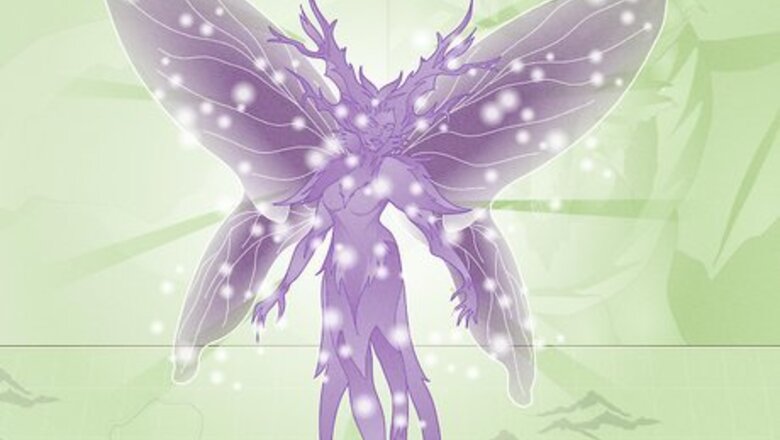
views
- The Fey Touched feat adds +1 to your character’s Wisdom, Charisma, or Intelligence score and lets them cast the Misty Step spell once per long rest.
- When your character has the Fey Touched feat, they can also choose a single level 1 enchantment or divination spell to cast without using a spell slot.
- Being “Fey Touched” adds flavor to your character’s backstory, indicating that they’ve been marked by the Feywild—a lush, forested fairy realm.
What does Fey Touched mean in D&D 5e?

Fey Touched characters have been marked by the power of the Feywild. In D&D 5e, the Feywild is a vibrant and sentient forest filled with faeries and other fey creatures. It echoes the Prime Material plane (the physical world that the majority of D&D adventures take place in). However, it’s possible to travel to the Feywild—and, sometimes, characters that travel to the Feywild are marked with a fey blessing. That’s where the Fey Touched feat comes in! You can give your character the Fey Touched feat to flesh out their backstory or add to their skillset as they develop more power and abilities in your D&D campaign. For example, you might make a player character who wandered into the Feywild as a child, in which case you could give them the Fey Touched feat. Alternatively, if your character visits the Feywild during the campaign, you might use that as an excuse to give them the Fey Touched feat.
How does the Fey Touched feat work?
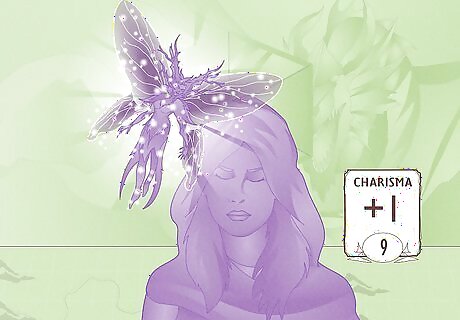
Fey Touched grants the Misty Step spell and an ability score bonus. When you take the Fey Touched feat, your PC (player character) immediately gains two major perks! First, you’ll gain the ability to cast the Misty Step spell and any other 1st-level divination or enchantment spell once per long rest without spending a spell slot. Second, you’ll be able to add +1 to your character’s Wisdom, Charisma, or Intelligence ability score (to a maximum of 20). If you have the required spell level to do so, you can also cast Misty Step and the other spell of your choice using a spell slot (even after using them once already). The spell you choose as part of this feat automatically has the same spellcasting ability as the ability score you choose to increase. For example, if you increase your Charisma ability score by 1, then Charisma would also be your spellcasting ability for the spell. Spellcasting ability determines the effectiveness of your spells—so the ability score you choose to increase can, ideally, also make your PC a stronger spellcaster!
Is Fey Touched an effective feat?
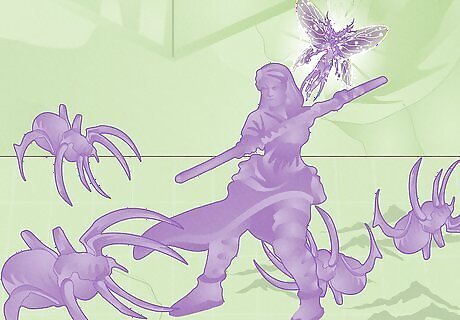
Fey Touched is powerful and effective, offering versatile spell options. The ability to choose an extra level 1 spell is super beneficial for most types of characters. If you’re playing a spellcaster (like a wizard or bard), Fey Touched lets you expand your arsenal without taking up spell slots. If your PC is a martial fighter (like a ranger or monk), Fey Touched gives them limited access to powerful spells that they wouldn’t otherwise have—offering you an edge in combat. Spells are an easy way to introduce the idea that your character has (or was exposed to) supernatural power. And, with feats, you can give your character supernatural powers regardless of their main class. In D&D 5e, classes determine your character’s main skillset, abilities, and role in combat. For example, fighters are gifted martial combatants who use strength and endurance to fight with weapons, while sorcerers are spellcasters with innate arcane powers and abilities. Not sure which spells to choose with the Fey Touched feat? See the recommendations below!
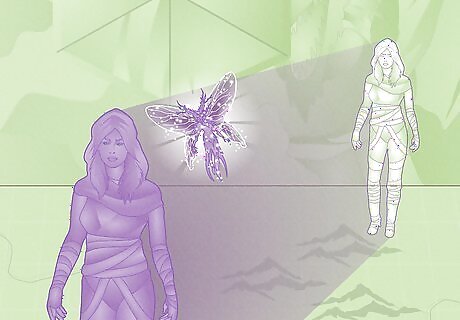
The Misty Step spell gives characters extended mobility in combat. Misty Step is a 2nd-level conjuration spell that allows your PC to teleport up to 30 feet to an unoccupied space within view. Additionally, Misty Step only takes a bonus action to cast. This makes the Fey Touched feat incredibly valuable, even without the ability to choose an extra level 1 spell, as Misty Step gives your PC the ability to cover more ground and escape ambushes in combat! In D&D 5e, PCs can only move as much as their movement speed allows in combat. If they get cornered by enemies, trying to get away may cause foes to make attacks of opportunity. Misty Step allows your PC to go further than their movement speed, granting 30 feet of free movement in addition to whatever your character’s speed normally is. When your PC is surrounded by enemies, Misty Step allows them to move without getting attacked. This is because it’s a type of teleportation spell; your PC doesn’t have to run away physically!
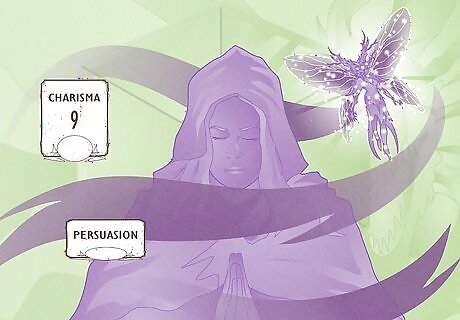
The feat benefits classes that rely on Charisma, Wisdom, or Intelligence. In D&D 5e, you roll 6 ability scores for your PC, which are their primary statistics. Ability scores determine how good your PC is at doing anything—and because each class comes with different skills, each one also relies on 1 or 2 ability scores more than the others. If your PC’s class relies on Charisma, Wisdom, or Intelligence, then the Fey Touched feat makes their skills and abilities more effective! For example, if you play a bard character, their main spellcasting ability is Charisma. Thus, raising their Charisma score makes them better at casting spells and using Charisma-based skills like Persuasion. Charisma (CHA) measures a character’s charm, eloquence, and force of personality. High-charisma characters are often persuasive and well-liked. Wisdom (WIS) measures a character’s practical intelligence, cleverness, and perceptiveness. High-wisdom characters are often observant and sensible. Intelligence (INT) measures a character's memory, analytical skills, and logical reasoning. High-intelligence characters tend to be “book smart” and skilled at deduction.
Best Fey Touched Spells
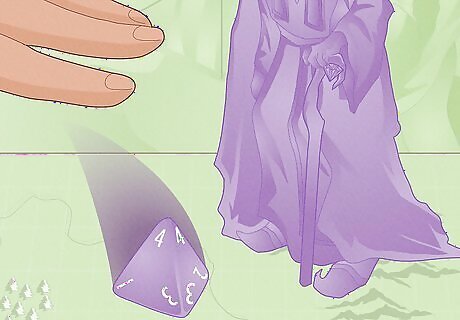
Bless Bless is a 1st-level enchantment spell and all-around useful buff for D&D characters. The spell grants affected creatures a 1d4 bonus to all attacks and saving throws while the spell is active—and, at level 1, you can choose to cast it on up to 3 different creatures. This can give the majority of your party quite the edge in combat, making PCs more likely to make successful attacks and resist harmful effects from enemies! Attack rolls determine whether a creature hits with their attack or misses the target. If an attack roll is the same or higher than a target’s armor class, the attack hits. Saving throws determine a creature’s ability to resist a potentially harmful effect. If their saving throw meets or is higher than an enemy’s DC (difficulty class), they succeed in the saving throw.
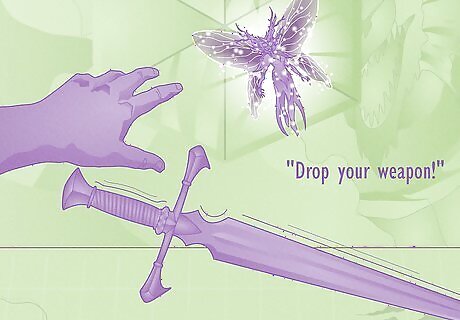
Command Command is a 1st-level enchantment spell that lets you briefly charm and order around enemies in battle. If they fail a saving throw to resist your spell, you can order an enemy to drop their weapon, move closer to you (potentially getting them away from vulnerable party members), run away from you, or halt and stay exactly where they are, taking no actions in combat as a result. Command only lasts 1 round, but it can temporarily and cleverly remove an enemy long enough for your party to rally and get the upper hand in a battle! Alternatively, if you’re interested in a charm spell, Compelled Duel can force an enemy to engage with your character in 1-on-1 combat—though that mainly benefits martial classes like fighters or paladins.
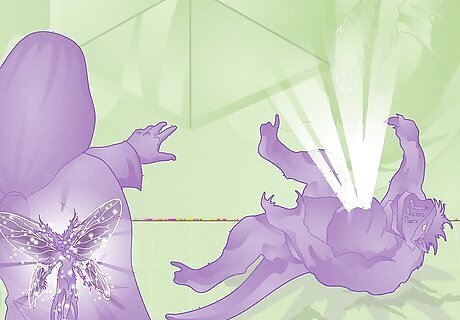
Dissonant Whispers Looking for a spell that can do some damage in combat? Although it’s an enchantment spell, Dissonant Whispers does 3d6 points of psychic damage to a single target of your choice within range (or half damage if they succeed on a WIS saving throw). If the target fails their save and takes full damage, they also must use a reaction to move as far from you as possible. This spell is especially effective when the target is already being attacked by another character. When you force the target to move away, the character facing them gets an attack of opportunity, dealing even more damage!

Hex or Hunter’s Mark Hex and Hunter’s Mark both help your PC deal extra damage to enemies. Hex deals an extra 1d6 points of necrotic damage per attack—and it can be used with both weapon and spell attacks. Meanwhile, Hunter’s Mark adds an extra 1d6 damage to weapon attacks only, making it mainly valuable to martial classes that use weapons over spells. Hex and Hunter’s Mark both take a bonus action to cast. Hex requires verbal (a spoken phrase), somatic (hand gestures), and material components (namely the petrified eye of a newt), while is only verbal. This makes Hunter’s Mark easier to cast even when your PC carries weapons. Hex’s damage is more effective because it’s necrotic and stacks on all attacks. However, Hunter’s Mark balances this out by allowing you to track affected creatures more easily, which can be helpful if they’re sneaky or invisible.

Hideous Laughter If you can’t cast Hold Person (which is a 2nd-level spell), Hideous Laughter (also called Tasha’s Hideous Laughter) is an effective 1st-level substitution, especially at lower levels! When a target fails a WIS saving throw, they effectively become incapacitated and prone as fits of uncontrollable laughter overtake them, making them completely unable to move or take actions until they make a successful saving throw or the spell ends.
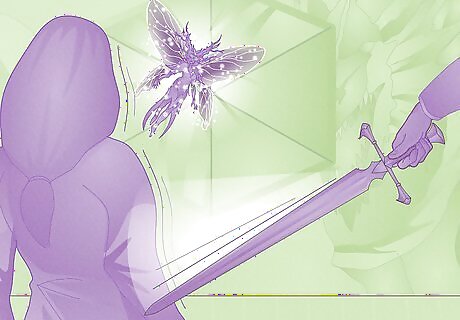
Silvery Barbs Silvery Bards is incredibly effective for a level 1 spell, allowing you to impose disadvantage on a creature when they succeed on an ability check, attack roll, or saving throw. This is especially potent because there’s no saving throw to resist the spell, so regardless of how strong an enemy is, you can force them to reroll and potentially fail rolls that they normally would’ve succeeded on. Disadvantage means rolling 2d20s instead of 1 on an ability check, attack roll, or saving throw and taking the lower result—thus decreasing the chances of success. For example, when an enemy is about to land a devastating hit on an ally in battle, you can use Silvery Barbs as a reaction and force them to reroll the attack, which may cause them to miss. When facing down powerful enemies with legendary resistances (which is a limited pool of resistance that lets them automatically succeed saving throws), you can whittle down their legendary saves by continually forcing rerolls.
Which classes benefit from the Fey Touched feat?
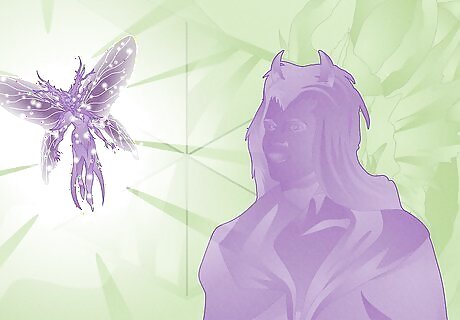
Warlocks Warlocks are Charisma-based spellcasters who gain powers by making a pact with a powerful entity, so it’s never a bad idea to increase their CHA score. Furthermore, Warlocks have very limited spell slots compared to other spellcasters (only 2 slots at low levels, 3 slots from levels 11 to 16, and 4 slots from levels 17 to 20). Thus, having 2 free spells to cast (Misty Step and another of your choice) is incredibly handy for Warlock PCs. Hex is a Warlock spell, but if you don’t have it yet (or want to get it for free), taking it as part of the Fey Touched feat is a solid idea. Command and Dissonant Whispers are also strong spells for any Warlock’s arsenal!
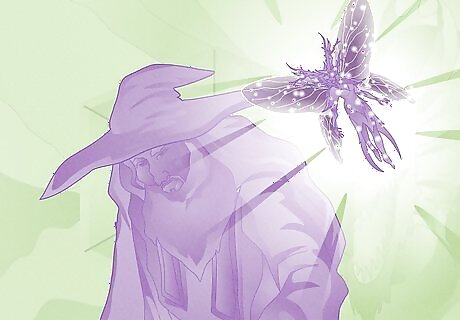
Wizards Wizards are Intelligence-based arcane spellcasters that study intensively to master their craft. A wizard PC will benefit from using Fey Touched to buff their INT score. Wizards already have the most robust library of spells out of all the D&D spellcasting classes, but that doesn’t mean they can’t use a free Misty Step spell—and an extra spell added to their spell list on top of that. Consider choosing one of the few spells wizards don’t have access to normally, such as Bless, Command, or Dissonant Whispers.
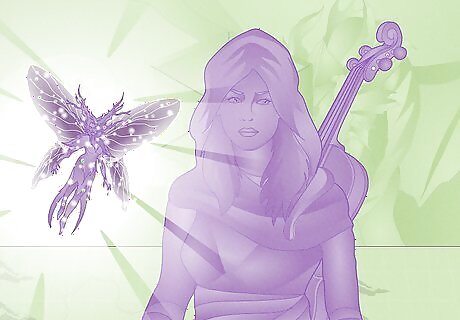
Bards Bards are Charisma-based spellcasters that use the power of music, rhythm, and prose to work their magic. So, consider increasing your bard PC’s CHA score with the Fey Touched feat! Additionally, while the bard spell list already grants access to a wide range of enchantment and divination spells, there are a few spells bards don’t normally get—like Bless, Hunter’s Mark, or Hex.

Druids Druids are Wisdom-based spellcasters who gain spells from their connection to nature. They don’t normally get the Misty Step spell but can get a ton of use from it with the Fey Touched feat! Additionally, using the feat can improve your druid’s WIS score and make them more effective in battle. If your druid tends to Wild Shape often (transforming into other creatures), a spell such as Hunter’s Mark could be super handy to cast right before they transform. If your druid relies more on spellcasting, spells like Bless or Silvery Barbs can help them buff allies or debuff enemies.

Artificers Artificers are Intelligence-based spellcasters who channel magic into their inventions and mechanical creations. Therefore, an artificer character can always benefit from an INT boost—and Misty Step, which isn’t on their usual spell list. For a free spell, consider choosing Hex or Hunter’s Mark to give your artificer a handy damage bonus.

Clerics Clerics are Wisdom-based divine spellcasters who gain spells from their faith and the gods they worship. This also class benefits from Misty Step, which they don’t normally get—but the other spell options (and potential WIS bonus) are very handy too. Clerics that tend to fight in close combat can get a lot of use out of Hex or Hunter’s Mark, while clerics that cast spells from afar can use Silvery Barbs or Dissonant Whispers.
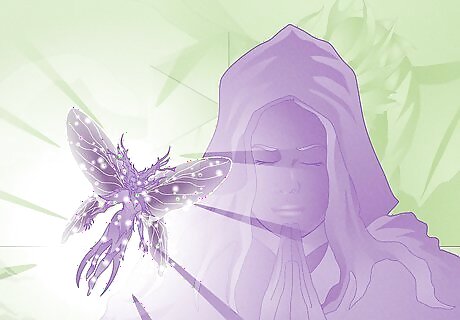
Sorcerers Sorcerers are Charisma-based spellcasters with innate magic in their bloodline; thus, they can benefit from a bonus to their CHA score. Their spell list already includes Misty Step, but it’s still a handy spell to have for free because sorcerers can’t learn as many spells as wizards. For the same reason, an extra level 1 spell is super appealing for sorcerers—especially something like Silvery Barbs!

Rogues Rogue is a martial class, not a spellcasting class. However, a free Misty Step spell is invaluable for rogue PCs—especially since so many of their abilities center around being fast, slippery, and able to move more freely around a battlefield than other characters. Rogues may also benefit from a WIS boost since they often use skills like Perception and Insight. If you’re playing a Swashbuckler rogue, CHA might be a useful ability score to boost—or, if you’re playing an Arcane Trickster, try increasing INT. Hideous Laughter is a solid spell choice for rogues; when enemies are incapacitated, you gain advantage on attack rolls (meaning you can roll 2d20s and take the higher result). Gaining advantage on enemies also lets you use the rogue’s Sneak Attack ability, dealing extra damage in your attack.

Rangers Although they primarily have martial skills, rangers still have limited spellcasting abilities and use WIS as a spellcasting ability—so a WIS increase can really help them! Furthermore, Misty Step can help improve a ranger character’s mobility (especially if they’re an archer and must maintain some distance from enemies). Hunter’s Mark is a natural spell choice since it’s already a ranger spell, and being able to cast it for free makes it even more appealing.
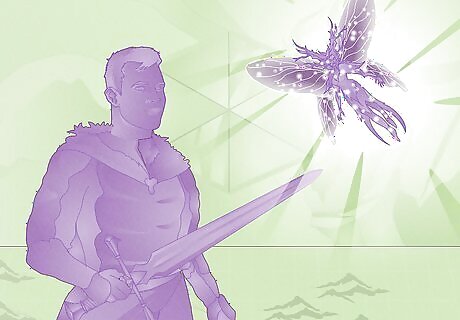
Paladins Like rangers, paladins have limited spellcasting abilities despite being a martial class first and foremost. Paladins use CHA to cast their spells, so using the Fey Touched feat to boost their CHA can give your paladin more of an edge. Hunter’s Mark is a great choice for most paladin characters since it lets them add extra damage on top of the significant weapon damage they already do. Keep in mind that Oath of Vengeance paladins already have access to Hunter’s Mark. In that case, choose any other available spell that appeals to you!
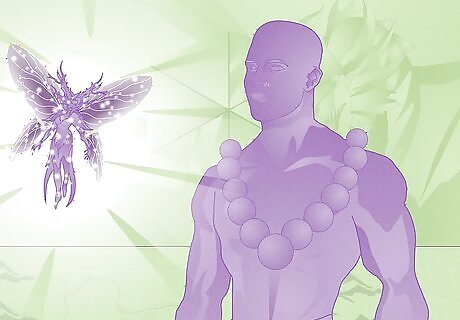
Monks Monks are a unique brand of martial character; their body is their primary weapon, and they fight best with their fists. They’re also agile and swift, able to traverse a battlefield faster than other martial classes—and Misty Step only makes them more formidable. Because monks use their WIS ability score for certain abilities, a WIS bonus could also prove useful. Hunter’s Mark is the most practical spell choice for monks since it adds damage to each of a monk’s many melee attacks.

Fighters Fighters are juggernauts on the battlefield, capable of wielding the widest assortment of weapons and striking down foes with brute force. Misty Step makes it even easier for fighters to control the battlefield and reach more enemies. While they don’t really use their CHA, WIS, or INT ability scores for much, CHA can make them a little more persuasive, or WIS can make them more perceptive, which are both universally helpful skills in D&D. Hunter’s Mark is also a practical spell choice for fighters since their most common move in a fight is to attack with physical weapons—and Hunter’s Mark adds extra damage to a fighter’s already impressive attacks.

Barbarians Barbarian characters will likely get the least use out of the Fey Touched feat. It’s perfectly acceptable to take the feat for flavor while playing a barbarian PC, but other feats may have more technical value. A barbarian won’t get much use out of the ability score bonus since they use Strength (STR) and Constitution (CON) most often—but, as always, Misty Step can absolutely improve a barbarian’s mobility. Strength measures a character’s ability to exert physical force, lift heavy objects, and shove and grapple creatures more effectively. Fighters, barbarians, and paladins often use STR. Constitution measures a character’s fortitude and ability to endure pain, poison, and disease. CON is important for all classes, though fighters, barbarians, and other martial classes rely on it most.




















Comments
0 comment